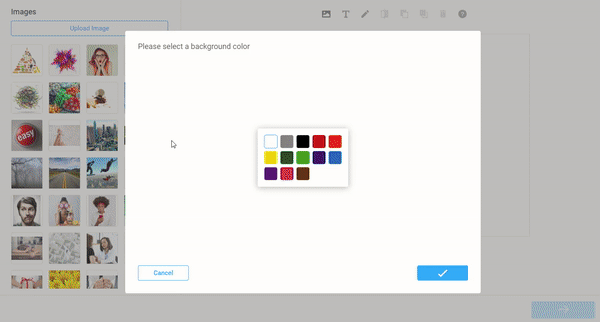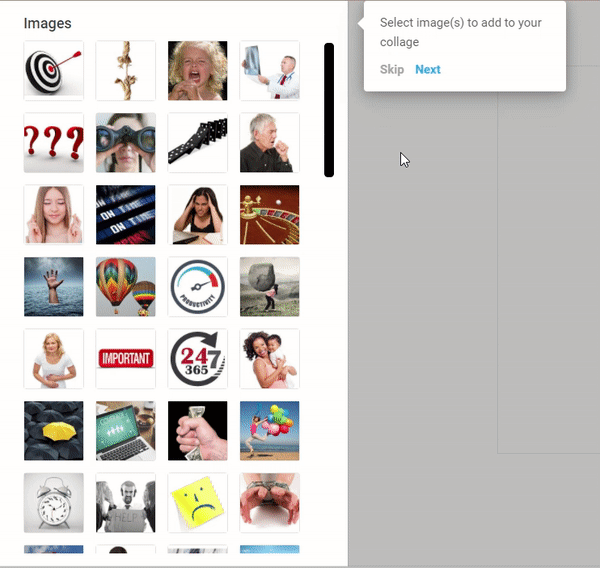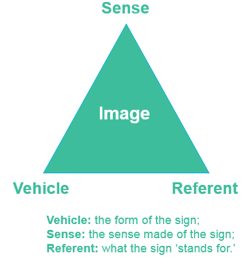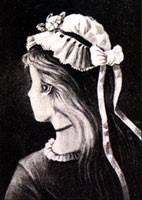Most emotional research, especially when conducted among larger sample sizes, fails to capture emotions and only delivers affected attitudes based on past experiences. And depending on the recency of relevant experiences of the respondent, the ability to richly express those attitudes will vary across respondents.
While small groups or one-on-one interviews frequently yield spontaneous emotional insights, in order to better understand how emotional reactions are similar or different between respondents with varying levels of comfort, it is necessary to talk to a larger quantity of people, making in-depth interviews inefficient cost and time-wise.

This patent-pending technique allows respondents to interact with the issue or question in a non-lexical indirect format, thus reducing the dependency of accessing rational thoughts (which consistently results in affected attitudinal responses rather than emotional responses). By expressing their reactions through pictures along with follow-up open-ends we will gain a much richer understanding than through words alone.

Human Qualities Plants and Vegetables Games
War/Fighting
Liquids
Walking/Running Food/Drink
Money
Cloth/Clothing Movement/Transfer Vehicles/Vessels Weather
Vision
Zaltman has also done work building from universal metaphors. With the universal metaphors as a starting point, we make a few key considerations in final image selection.
Balance of color across the color spectrum. We have found that the colors represented in a picture can  connote as much meaning in a picture as the subject of the image. In addition, background colors have meaning and play a role in the creation of the collage, also reflecting different color choices driven by subconscious decision. Therefore, we strive to have a balance of colors across the images for any given project.
connote as much meaning in a picture as the subject of the image. In addition, background colors have meaning and play a role in the creation of the collage, also reflecting different color choices driven by subconscious decision. Therefore, we strive to have a balance of colors across the images for any given project.
Example of how NOT to ask about an ideal vacation:

Minimize the social desirability bias by providing a broad enough image set. By allowing for pictures that cross slightly over the boundary of traditional socially acceptable behaviors we aim to uncover as honest a reaction as possible. We must balance and not offend the sensibilities of more conservative respondents (and clients). Socially desirable boundaries we may consider, depending on the topic of the project, include but are not limited to:
Balance overall number of images. We strive to pick approximately 100 photos for each project. This allows us to account for all of the considerations necessary for a healthy image set.
Too few pictures and you risk not capturing a hidden insight.
Too many pictures and you are likely to diffuse responses and compromise the quantitative powers of this technique.
Too many pictures also risks overwhelming the respondent and thereby having many pictures ignored as respondents simply consider anchoring images at the beginning and end of the image set.
All image choices are eventually approved by the client.
Buzzback has access to millions of royalty-free stock images of exceptional quality available for each project, many of which reside in our own image database. Our image database serves as the first destination in selecting an image set for each project. The majority of projects can be fulfilled internally, but occasionally we need to access stock photography websites for supplemental imagery. The more we can retrieve internally the quicker the selection process is completed. We can also accommodate client-supplied images for inclusion so long as the client has proper rights for image use.
The impetus for a graphic response tool came from reviewing a wide variety of recent research indicating that consumer choices and decision-making are largely irrational and made in the sub-conscious.
Our natural conclusion was that traditional, cognitive-based survey research was hampering our ability to understand motivations for consumer choices. The challenge is that lexical language does not exist in sub-conscious thought. However, imagery does.
|
A quick example: What comes next in the following series? ∆ Ω ∆ Ω ∆ Ω ∆ __ Was your first thought “the omega sign” or was it “Ω”? Thus, our goal was to provide an imagic response environment and our eCollageTM tool was born. |
Our first task was to see if there were objective interpretations of images that could be used to offer a definitive image set and draw definitive conclusions based on quantified image selections.
We initially explored universal archetype imagery as a means to apply objective meaning to images. Jung tried to establish archetypes as heredity and instinctual. In his later work, Jung was convinced that the archetypes are psychoid, that is, "they shape matter (nature) as well as mind (psyche)" (Houston Smith, Forgotten Truth, 40). Jung based his work on the study of patients at the Burghöltzi, the Zürich insane asylum and psychiatric clinic where he observed that the drawings of lunatics shared common symbols that he later extrapolated to the general public. We had two basic challenges in adopting this theory for use in eCollageTM:
Further, the challenge of objective image interpretation is explained in the semiotic works of philosopher Charles Sanders Pierce. Pierce offered a model of symbol interpretation as follows:
 |
It is not safe to assume that for all people the Sense and the Referent are the same; a picture does not only have a literal meaning, or denotation, but also carries connotations and those connotations can be either cultural or personal. |
To further diffuse the meaning, connotations can exist on multiple levels:
Most semioticians argue that no image is purely denotative and without connotation. Semiotician Valentin Voloshinov insisted that no strict division can be made between denotation and connotation because 'referential meaning is molded by evaluation; meaning is always permeated with value judgment'. The result is that there can be no neutral, objective interpretation which is free of an evaluative element.

To simplify the fact that images carry no single, objective meaning, we present the image to the right, a classic optical illusion that can be seen as either a young woman or an old woman. With or without effort, the brain switches between interpreting the image as one or the other. There simply is no single interpretation of this image. We have found the same to apply to all images used in our eCollages and thus our reliance on follow up probes.